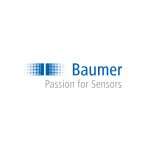Baumer cameras ensure blowhole-free metal parts
Die cast parts manufacturers in the metallurgy industry face the constant challenge of detecting blowhole cavities in their products. A task made easier for one such company, Gruber & Kaja, since employing an automated detection system that uses six industrial cameras from the Baumer LX series to reliably detect blowholes as small as 0.4 mm and ensure that customers receive aluminium parts that are completely free of blowholes.
The challenge of blowholes for this metallurgy industry manufacturer
As an automotive supplier specialising in engine-related aluminium die cast parts, it is imperative that Gruber & Kaja High Tech Metals GmbH produce components free from blowholes. This is critical to their success in ensuring their capability for producing quality and durable products. Particularly in the sealing process of flat, CNC-machined surfaces the sealing lip must be properly in place to fully rest on the surface.
An increase in demand led Gruber & Kaja to realise the need for a higher automation level, which drove the need for automated visual inspection that – up until now – had been a manual process. The task: components sized 350 x 400 mm should be reliably inspected for blowholes that were 0.4 mm or larger.
It took Gruber & Kaja more than a year to evaluate the approaches of several component and system manufacturers. AUTFORCE Vision Systems GmbH in Lienz, Austria was the only one to meet their demanding specifications.
Revolutionising the physical metallurgy process
"We've broken new ground here. Neither we nor Gruber & Kaja knew of any system on the market that could automatically spot and evaluate such small cavities in components of the given dimensions", explains Stefan Perg, one of the managing directors at AUTFORCE.
In addition to the blowhole size, the minimum surface roughness within the specified active and passive sealing limits was a complex challenge. For example, the image was expected to reveal traces of surface machining such as milling grooves. The AUTFORCE solution: A multi-camera system with a particularly designed illumination dome.
"Image acquisition by multiple cameras minimises distortion and increased optical resolution. Additionally the illumination dome provides the optimum illumination to filter machining and milling traces to make them literally invisible", Mr. Perg explains the architecture of the system’s centrepiece.
Space restrictions were a challenge in the overall concept because of the lack of space at Gruber & Kaja compared to the relatively large components. “The existing installation at the intended location consumed all the space, requiring the system to be mounted on this unit. And of course, we also had to consider the maximum height of the robot arranging the parts in the camera's operating range,” Stefan adds.
Baumer cameras provide multi-camera image acquisition
The system‘s centrepiece is an inspection cell with a dome-shaped illumination element equipped with slight overpressure to prevent the ingress of dirt. For image acquisition, AUTFORCE uses six Baumer LX series GigE cameras with eight megapixel resolution. “The principal benefit of multi-camera image acquisition is minimizing distortion in each image while maintaining the full image resolution“, explains Mr. Perg.
Third-party-compatibility of the cameras allows for image analysis via HALCON machine vision software. For this purpose AUTFORCE designed a program using the individual images for building a pixel-accurate composite image which is compared against the component CAD data to define the inspection area. This all takes only a few seconds. Still in the evaluation process, the clamp holding the component turns 180 degrees for inspection of the opposite component side. The ratio between camera resolution and pixel size was an important selection criterion.
"The ideal camera we were looking for had to feature a robust design, a sufficiently large chip size respective pixel size and yet a high optical resolution“, Stefan explains. Equipped with CMV8000 global shutter sensors by ams (formerly CMOSIS), the high-performing, industry-capable LXG-80 Baumer cameras with 5.5 x 5.5 µm pixel size and a resolution of 3360 x 2496 pixels were the perfect choice.
For more information, visit www.baumer.com.
Get the latest process industry news
Interested in receiving even more industry-leading news from Process Industry Forum delivered directly to your inbox? Then sign up to our free newsletter. Bringing you the latest news, trends, innovations and opinion from across the process industry, our exclusive newsletter gives you all the industry insights of the moment in one, easy-to-digest bulletin. Stay ahead of the competition with regular process industry news instalments from PIF.

